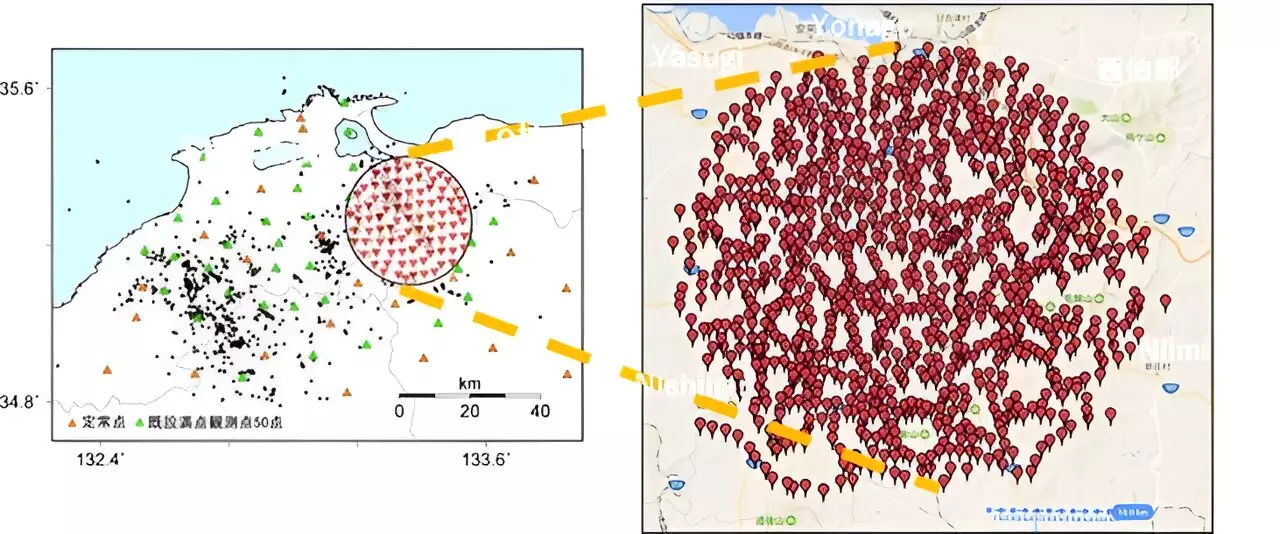Japan, a country situated along the enigmatic Pacific Ring of Fire, is no stranger to the unpredictable nature of earthquakes. With the frequent occurrence of minor tremors and the persistent apprehension of a significant seismic event, Japan’s geological landscape presents a continuous challenge to scientists striving for better understanding and prediction of these natural phenomena. At present, the capability to predict the onset of major earthquakes remains elusive. However, groundbreaking studies from Japanese researchers may pave the way for improved insights into the mechanics that lead to such events.
Seismic Activity: Insights from Kyushu University and the University of Tokyo
The complexities of seismic activity and earthquake behavior have drawn considerable attention from seismologists, particularly in Japan. Recently, a collaborative effort between researchers from Kyushu University and the University of Tokyo delved into the intricate relationship between fault strength and the magnitude of earthquakes. Their research, published in the respected journal Nature Communications, proposes a significant correlation between the properties of geological faults and their propensity to generate major earthquakes.
Professor Satoshi Matsumoto, leading this insightful research, refers to an essential seismological metric known as the b-value. This variable serves a critical role in interpreting the relationship between the frequency of earthquakes and their respective magnitudes. A lower b-value indicates a greater potential for larger earthquakes, which poses a considerable threat to densely populated areas. Matsumoto highlights that understanding the b-value in relation to fault strength may enable scientists to better anticipate seismic events.
The Role of the b-value in Earthquake Prediction
The b-value is not static; it can fluctuate based on geographical locations and time frames, particularly demonstrating a decline prior to significant earthquakes. Previously, research implicated an upward trend in stress forces on faults as a primary driver for this decrease. However, the recent study expands on this premise by linking fault strength as a major factor influencing b-values.
In their exploration, the research teams focused on seismic activity surrounding the epicenter of the Western Tottori Earthquake, which shook the region with a magnitude of 7.3 in the year 2000. By deploying over 1,000 seismic stations within the zone, the researchers captured seismic events with unprecedented precision. This extensive network of sensors allowed them to detect even the faintest aftershocks—often imperceptible to human senses—resulting in an enhanced understanding of how faults behave under stress.
One of the pivotal outcomes of this research involves characterizing faults as either strong or weak based on the stress field calculations derived from their observations. Matsumoto explains that the fault plane’s orientation in relation to prevailing stress conditions plays a critical role in determining its likelihood of slipping. Weak faults, those that lie in unfavorable orientations, are more prone to slipping, thereby releasing energy before a significant amount of stress accumulates. This aspect is crucial, as it suggests that these faults can alleviate pressure without generating major quakes.
Conversely, stronger faults display greater resistance and require more substantial stress to initiate movement. The findings indicate that strong faults correspond with smaller b-values, enhancing the forecast of larger earthquake events. This delineation of fault behavior marks a significant advancement in understanding the mechanics at play in earthquake generation.
The overarching goal of this in-depth investigation is to contribute towards the ultimate challenge in seismology—earthquake prediction. While complete and precise forecasting remains out of reach, Matsumoto expresses optimism. He believes that by examining data such as fault direction, strength, and b-values, researchers can approach a more nuanced understanding of when a fault might reach a critical tipping point.
Japan stands at the forefront of seismic research, with its scientists diligently working to decode the mysteries of earthquakes. The study conducted by the teams at Kyushu University and the University of Tokyo reveals vital insights regarding the interactions between fault strength and earthquake magnitude, offering hope that one day, a more reliable framework for predicting earthquakes may emerge. While precise predictions may remain a dream, the incremental progress in understanding the geological indicators might help mitigate the risks associated with one of nature’s most formidable forces.


Leave a Reply